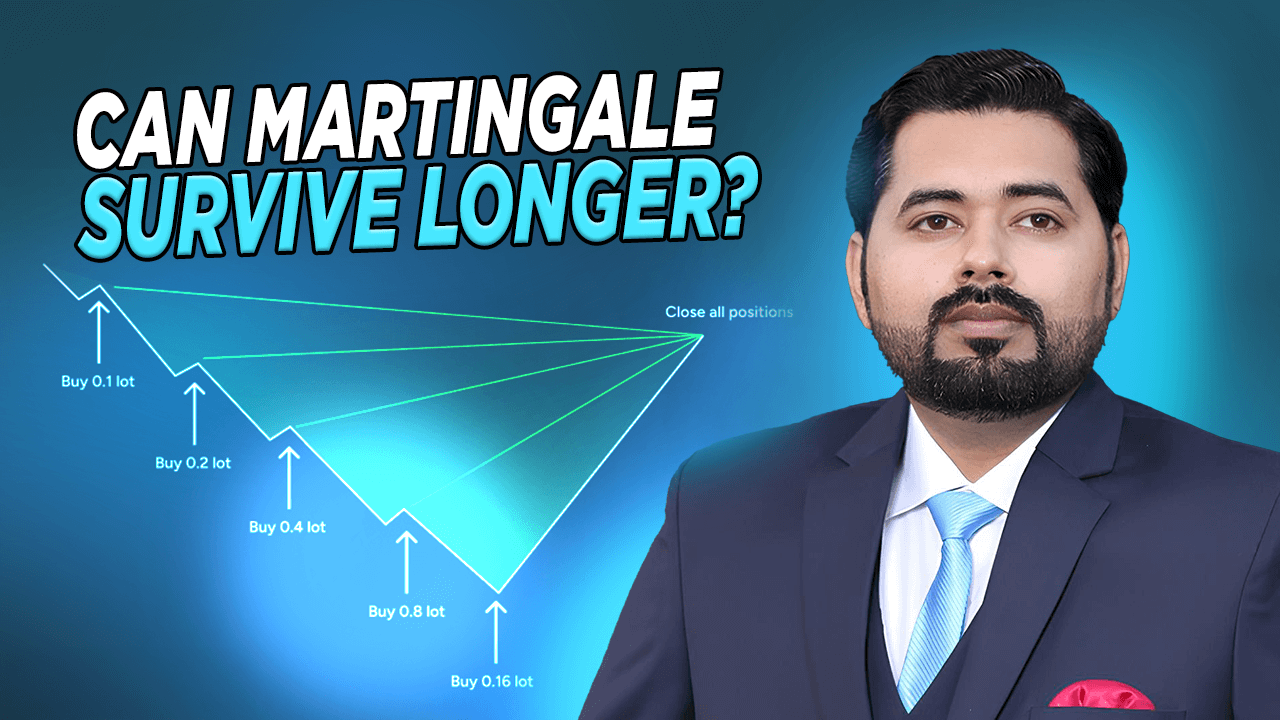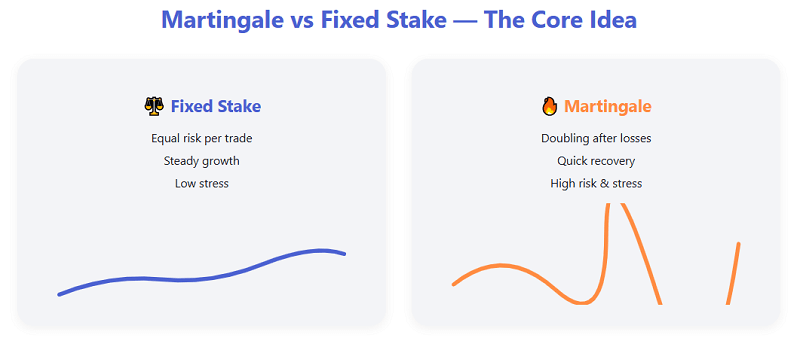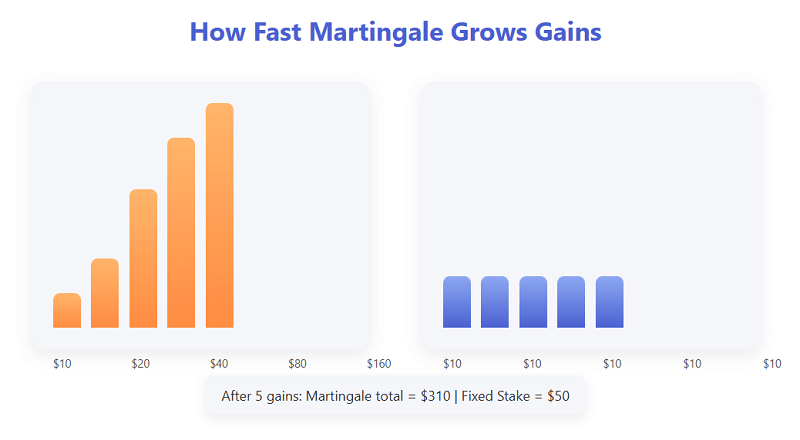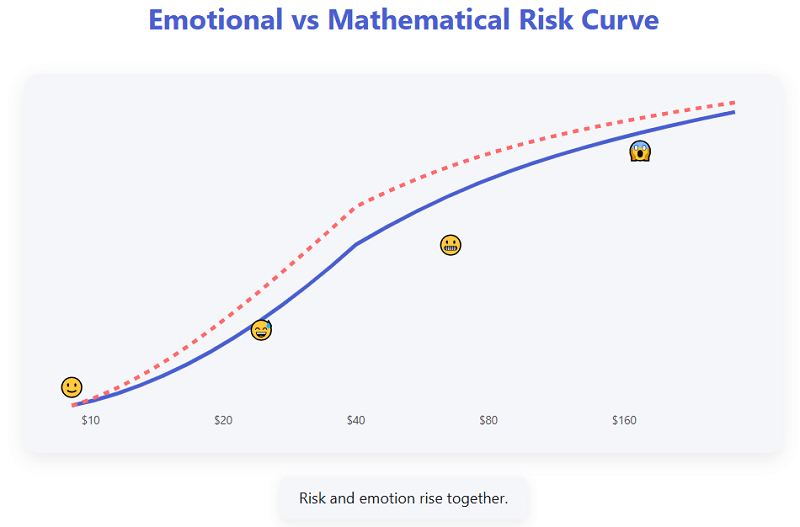Martingale vs Fixed Stake: Which Risk Strategy Survives Longer?

I remember the moment I first tested a martingale system in my binary options account. I was fresh off a few wins using a fixed stake approach, always risking the same amount on each trade, and thought: maybe if I switch to doubling losers I can accelerate profits. So I did. That shift set off a chain of trials, errors, and hard lessons about survival in trading.

Over the next months I documented how the martingale vs fixed stake approaches played out in real trades, which one held up under pressure, and what I ultimately believe survives longer. If you’re considering either strategy, you might start by [opening an account via our affiliate link] and using a demo to test in your own environment before risking real capital.
How I Started with Fixed Stake
When I began trading, I used a fixed stake method: every trade risked the same monetary amount. It felt disciplined. On Day 1, I risked $10 per trade. If I won, I might risk $10 again; if I lost, I’d still risk $10. The math was simple: if I could win more than I lost, I would grow my account steadily.
I tracked trades for a month: 200 trades, $10 risk each. My win rate hovered around 52%, payouts varied. After commissions and payout adjustments, I made small but consistent growth. The key benefit: I never had a single trade size that threatened my account. I slept well.
Then I asked: “What if I could recover faster during drawdowns?” That question drew me to the martingale method.
Entering the Martingale Phase
I switched what I was doing. I risked $10 on the first trade. If I lost, I risked $20 on the next. If I lost again, $40, then $80, until a win recovered prior losses plus the original profit. That’s the classic martingale idea: double the stake every loss so the first win covers everything and adds a profit.
Initially, it worked. I had a string of small losses, then a win, and the account showed a profit. The thrill of turning drawdowns into a profit in one trade was intoxicating. I thought: this could be the faster route. But within a week I hit a streak of five losses. My next trade size would have been $160. I realized: the risk scaled fast.
The Battle of the Two Strategies
I decided to test both strategies side-by-side (in demo) to see which survived longer. Here’s how I compared them:
| Strategy | Starting Risk | What Happens After Losses | What Happens After Wins |
| Fixed Stake | $10 every trade | Risk remains stable | Growth is gradual |
| Martingale | $10 then double after loss | Risk grows exponentially | One win recovers losses + profit |
My hypothesis was: Fixed stake will survive longer; Martingale will recover faster but risk a blow-up.

Over 120 trades in each strategy, the results were telling. Fixed stake had consistent equity growth with minor drawdowns. Martingale had faster spikes but deep equity dips when losses stacked. After 10 consecutive losses, I almost reset the Martingale experiment to avoid zeroing the demo balance.
What the Research Says and Where I Felt the Gap
Many articles explain the martingale method: double after losses, eventually win back. But few address how this plays out in binary options where trades have fixed payout, expiry, and limited upside. For example, the martingale concept originated in gambling and probability theory. For binary options the risk is magnified: you might double stakes, but your payout doesn’t necessarily double, and you may hit broker/trade limits or emotional limits fast.
Fixed stake methods are often overlooked in fancy strategy articles, yet for many traders they are the backbone of survival. The top-10 Google results rarely take the time to compare survival curves between the two in a realistic trade journal style. That gap became my mission to fill.
My Real-Life Lessons
Here are some of the key lessons I learned from real trades.

Lesson 1: Drawdown pain is real
In my Martingale sequence, I lost $10, then $20, $40, $80, $160 = total $310 risked before the next trade. One more loss and I risked $320. Even on a demo that felt reckless. The psychological pressure grew, each trade became about fear of “when will I win.” With fixed stake, I lost $10 ten times = $100; still painful but manageable.
Lesson 2: Win rate matters, payout matters
I found that for fixed stake I needed a modest edge and payout above break-even. For martingale, the win rate didn’t have to be high, but one win had to recover all losses and net profit. In binaries, the payout is often less than 100% of stake; so the “one win covers all” math becomes tougher.
Lesson 3: Capital size and risk tolerance
I realised that martingale demands a significant buffer. If your sequence can hit ten losses before a win, you must afford risking $10 + $20 + $40 + … + $512 = $1022 just to attempt recovery of $10 profit. Many traders don’t disclose that. With fixed stake, your risk per trade stays known; you won’t lose the farm in one trade sequence.
Lesson 4: Unexpected market behaviour kills the ladder
One trade sequence I logged: five losses in a row using martingale during a volatile news release. The next “double stake” trade triggered exactly at the wrong moment, spread widened, payout reduced, and I’d already risked too much. With fixed stake I would’ve kept trading but had lower exposure. It’s not about strategy correctness, it’s about exposure.
How I Adapted My Approach
After seeing how fast martingale exposure snow-balls, I changed my approach. I kept fixed stake as my baseline, and I treated martingale only in defined, limited circumstances (if ever). I structured rules such as:
- If I use martingale, cap the ladder at 3 doubles maximum
- After one recovery win, reset to base stake
- Only apply martingale on high-probability setups (which reduces frequency)
- Prefer fixed stake for topology of my trades (binary options with fixed expiry)
I found this hybrid approach gave me the mental comfort of fixed stake and the occasional opportunity of scaled risk, without risking unlimited exposure.

Which Strategy Survives Longer?
From both my data and journal notes the conclusion is clear: Fixed stake survives longer. Martingale might recover faster, but the risk of ruin is much higher. The exposure grows exponentially, and unless you have deep capital, strict rules and emotional discipline, you will hit a loss sequence you cannot recover.
Fixed stake method tends to preserve capital, allows consistent trading, and gives you the opportunity to learn and adapt over time. It might not deliver explosive growth, but if your goal is longevity it gives you a real chance.
Practical Guidelines for Traders
Here are practical take-aways from my experience:
- Know your max consecutive loss tolerance and risk accordingly.
- Use fixed stake if you want long-term survival and steady growth.
- Use martingale only if you accept higher risk, have strong setups, and set strict exposure limits.
- Track performance: win rate, payout, average drawdown, compare what happens under both systems.
- Consider hybrid models but ensure you treat stake increase as controlled risk, not hope.
- Always include an exit rule: e.g., “stop using martingale after 3 doubles” or “return to base stake after win.”
If you’re ready to test these approaches yourself, open an account via our affiliate link and begin with demo mode to see which style aligns with your risk profile.
Final Thoughts
Over time I realised trading isn’t about finding a perfect system, it’s about surviving until you become profitable. In the battle of martingale vs fixed stake, fixed stake wins the longevity test. It gives you the time and capital to refine edge, learn, and adapt.
Martingale offers a tantalizing shortcut, double down, recover losses, profit. But as I learned, shortcuts become traps when you underestimate exposure and overestimate ideal conditions.
I’m still trading, still learning, but I trade with modest stakes, steady progress, and respect for risk. If you’re exploring risk strategies, test both in a demo first, track everything, and decide what “survival” means for you.
Which Risk Strategy Survives Longer?
“Survival is the trader’s true edge.”